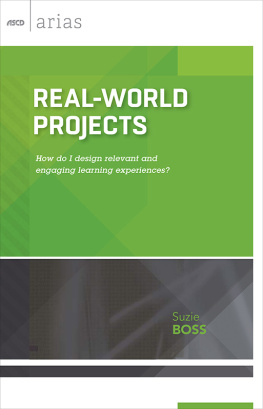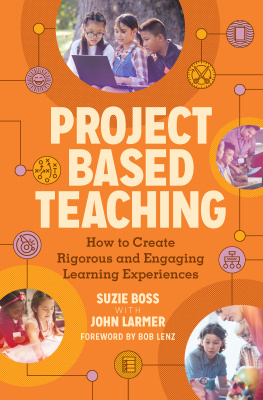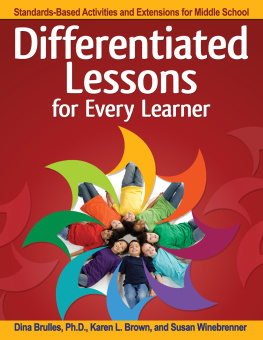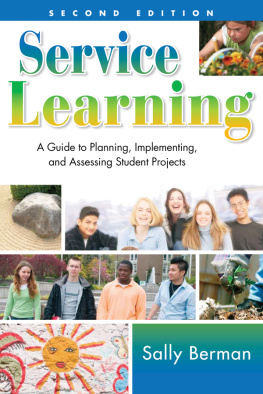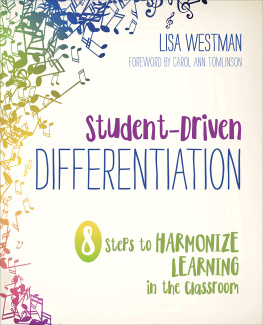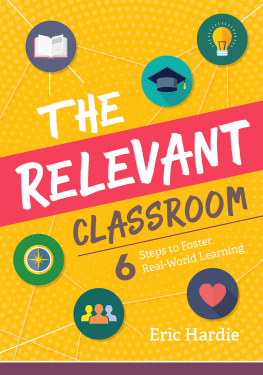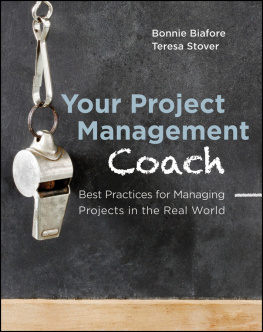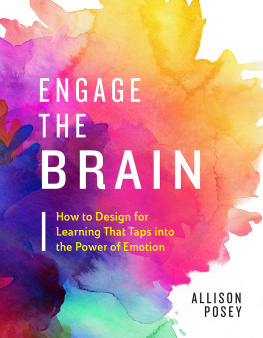


Introduction to Project-Based Learning
Like many schools, Sonora Elementary in Springdale, Arkansas, has a vision of preparing todays students to become tomorrows leaders. This is more than a catchy slogan on a web page: teachers and school leaders regularly encourage Sonora students to take the lead on solving problems that matter to them.
What does this look like in action? Picture two 4th grade girls who want to share their love of reading and improve their schools literacy rate. They start to formulate an action plan to get books into the hands of classmates during the summer. Because their school integrates technology across the curriculum, these girls are adept at using tools that enable them to map and analyze data. When they map the addresses of all 700 of the schools students, they notice a high concentration of children in neighborhoods with apartment complexes. That information helps them plan a route and schedule for a mobile library. They even customize the recommended book selections to match students reading levels and interests. When the girls present their well-crafted proposal for a mobile library to a local car dealer, hes sold. He donates a van to put their summer reading plan into action (Miller, Vaughan, & Worthy, 2014).
When students are engaged in real-world problem solving, theyre in the drivers seat of their own learning. They dont ask that tired question, When will we ever need to know this? Theyre motivated to develop new skills and master challenging content because they recognize the usefulness of what theyre learning.
Real-world learning makes education more relevant and purposeful. Through such experiences, students learn to recognize problems worth solving and get good at communicating their thinking. Whats more, they develop a sense of agency. This powerful ideathat young people are capable of taking action and making things happenputs students on the path to active citizenship.
Why This Focus?
The strategies in this book have emerged from more than a decade of interviews, classroom observations, and professional development related to project-based learning, or PBL. Through my work with teachers and students in diverse settings, both in the United States and internationally, Ive seen a wide range of projects that emphasize real-world connections while addressing rigorous learning goals. For example, middle school students learn about geography and finance by using microlending to support entrepreneurs in the developing world. High school students apply their communication skills and critical thinking to convince their classmates not to become dropout statistics. Elementary school students gain an understanding of habitats by teaming up with ranchers and farmers on conservation projects.
Although teachers often tell me they can see why real-world projects would engage their students, many are uncertain of how to design and manage projects that involve issues, experts, and audiences beyond their classrooms.
In this brief publication, you will find practical strategies for identifying project-worthy ideas, connecting with experts and allies, and thinking critically about the role of authentic audiences. Project examples are woven throughout, showing what real-world learning looks like in action. Resources in the Encore section will help you plan your next steps.
Heres some good news: designing real-world learning experiences doesnt require an extensive technology infrastructure or heavy investment in professional development. It does take teachers who are willing to consider how content standards relate to the world beyond the classroom. School leaders play an important role by supporting teacher innovation in project design. It also helps to have a school culture that values student voice and parents who are supportive of learning experiences that may look quite different from what they remember of school. Connections to experts are important, too, for supporting students efforts.
When those elements align, powerful learning results. Danette McMillian offers a good example. She teaches economics and civics at Maplewood High School in Nashville, Tennessee. Many of her students have limited experiences outside their immediate neighborhood. Thats why this teacher keeps her eyes open for projects that address academic goals, expand students horizons, and enable them to improve their community. Sometimes students wind up improving their own lives in the process.
McMillian doesnt need to look far for inspiration. The street where the high school is located has no sidewalks. Its dangerous for pedestrians. Ive almost hit two students myself, she admits. To learn about the processes of government, students advocated for a sidewalk in front of their school. The project focus aligned perfectly with academic content: This class is about how government works. How, as a citizen, do you get things to change? McMillian says. She wants her students to not only understand how their government works, from the local to the national level, but also be able to apply what they know. Then it means something to them. Its real-world. They can look back and say, This project helped me with my life (personal communication, August 22, 2014).
How can you create more opportunities to bring the world into your classroom, and bring your students into the world? Lets dig in. And in the following pages, watch for think about it prompts to connect what you are reading with what you notice in your own learning environment.

Think about it: How often do you hear students ask, Why do we need to know this? or When will we ever use it? How do you respond?

Building on the PBL Framework
Fortunately, you dont need to invent a brand-new instructional approach to connect students with the real world. Project-based learning offers a ready framework that deliberately emphasizes engagement, invites curiosity, and values student voice and choice.
As PBL has taken hold in a variety of contexts, different flavors of this instructional approach have emerged. Projects may last for a couple of weeks or an entire semester; they might focus on a single content area or take an interdisciplinary approach. Some teachers design their entire curriculum through PBL; others alternate projects with more traditional instruction.
Regardless of differences in implementation, PBL is always about learning by doing. Students learn deeply by asking and investigating questions, applying what they learn, and sharing their results with others. By working collaboratively, solving problems, and communicating their findings, students master more than content: they gain important knowledge, skills, and dispositions that prepare them for taking an active role in their 21st century world.
For these benefits to accrue, projects cant be treated as add-ons to the curriculum. PBL is about main course learning, not dessert (Larmer & Mergendoller, 2010). Because PBL puts an emphasis on students applying what they learn, this approach aligns with the expectations of the Common Core State Standards. Across grade levels, the standards call on students to think critically, solve problems creatively, and make well-reasoned arguments supported by evidence. These are all embedded in well-designed PBL. The same holds true for the Next Generation Science Standards and technology integration standards, such as the ISTE Standards for Students.
Next page
